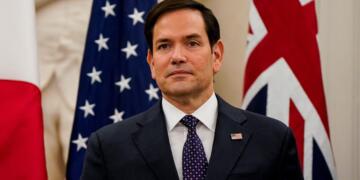From 21-22 December 2024, Prime Minister Narendra Modi is currently on a two-day visit to Kuwait, at the invitation of His Highness Sheikh Meshal Al-Ahmad Al-Jaber Al-Sabah, the Amir of the State of Kuwait.
PM Modi will script history when he steps onto Kuwaiti soil this December. This is not just another diplomatic tour—it is a historic occasion that marks the first visit by an Indian Prime Minister to Kuwait in 43 years. The Prime Minister is well known for his interactions with small yet important countries and regions of the world. He has visited several such countries where previous prime ministers failed or avoided visiting.
The importance of this visit extends far beyond mere protocol and traditional diplomacy. It represents a strategic pivot in India’s engagement with the Gulf region and a subtle approach to complex regional geopolitics.
The timing of this visit could not be more crucial. West Asia is witnessing a geopolitical shift. The power dynamics in West Asia are being restructured by disseminating Iranian and Russian influences in the region, and a fear of regional tensions is looming.
With its unique geopolitical positioning, Kuwait provides a crucial partnership for India in navigating these turbulent waters. Notably, Kuwait is currently heading the Gulf Cooperation Council (GCC), which provides India with a strategic opportunity to interact and even influence Gulf Politics.
Brief on India-Kuwait Relations
India has a historical, economic and cultural connection with Kuwait. After Kuwait’s independence from the British protectorate in 1961, India was one of the first countries which established diplomatic ties. Since then, high-level visits from both countries have uplifted the relationship between the two countries.
Around 26 bilateral agreements / MoUs have been signed between both sides in various domains. Around 14 agreements / MoUs are at different stages of finalization. The MoU on Defence Cooperation has been finalized for signing at an appropriate occasion. Kuwait has also been invited to join the International Solar Alliance (ISA) and the Coalition of Disaster Resilient Infrastructure (CDRI). Kuwait has conveyed its in-principle concurrence to join ISA.
Panchamrit, a new tool of India’s Foreign Policy
India has moved from the traditional stances it used to take previously, India is actively participating in world affairs and has been ahead in some areas. India’s foreign policy is now also more innovative. Generally, India’s foreign policy was understood to rest on two important pillars – economic interest and national security. When the BJP came to power, three more pillars were added. As such, India’s foreign policy today is guided by the five pillars of ‘Panchamrit’. The article will try to show how the upcoming PM’s visit is part of the pragmatic foreign policy approach ‘Panchamrit‘.
The five pillars of Panchamrit are Samriddhi, Suraksha, Samman, Samvad and Sanskriti.
Samriddhi (Economic Prosperity): The Kuwait visit strongly reflects this pillar through multiple economic dimensions. With bilateral trade at $10.47 billion and Kuwait being India’s sixth-largest crude oil supplier, Kuwait supplies 3% of India’s crude oil needs, which shows that the economic relationship is substantial. Kuwait’s sovereign wealth fund has already invested over $10 billion in India, and this visit could open new avenues for investment in technology, infrastructure, and renewable energy sectors. Potential discussions on energy security and trade diversification beyond oil further strengthen economic prosperity.
Suraksha (Security): The visit comes at a crucial time of regional instability, particularly with ongoing conflicts in Gaza and broader West Asian tensions. Kuwait’s strategic location in the Arabian Gulf and its neutral image makes it an important partner for maritime security cooperation. Recent developments, such as the visit of INS Visakhapatnam to Kuwait, highlight the security aspect. Discussions are likely to include counterterrorism, intelligence sharing, and securing vital shipping lanes, all contributing to India’s security interests.
Samman (Dignity and Honor): This pillar is particularly evident in the visit’s focus on the Indian diaspora in Kuwait. Prime Minister will interact with the Indian community in Kuwait. This tradition has been brought by PM Narendra Modi to interact with and show gratitude to the Indian community, which works in different countries and provides us with the largest remittances in the world. As the largest expatriate community in Kuwait, the welfare and dignity of Indian workers are crucial aspects of the visit. The implementation of the 2022 MoU for protecting Indian workers’ rights directly relates to ensuring their dignity and honour abroad. The fact that PM Modi will interact with the Indian community during his visit further emphasizes this aspect.
Samvad (Engagement): The visit exemplifies multi-level engagement. Beyond government-to-government talks, the visit includes interactions with business communities for economic cooperation, the Indian diaspora for community engagement, and multiple stakeholders in the energy, security, and trade sectors. India’s diplomatic engagement is bound to Track 1 and depends on Track 1.5 and Track 2. This comprehensive engagement approach reflects the Samvad pillar of India’s foreign policy, moving beyond traditional diplomatic channels to create deeper, more meaningful connections.
Sanskriti (Cultural Links): The historical and cultural ties between India and Kuwait form a strong foundation for this visit. The shared maritime heritage, the historical use of the Indian Rupee in Kuwait until 1961, and the strong people-to-people connections highlight the cultural dimension. The large Indian community in Kuwait has also contributed to cultural exchange and understanding between the two nations.
The Kuwait visit is a perfect example of how India’s Panchamrit foreign policy operates in practice. It demonstrates India’s ability to blend traditional diplomatic objectives with cultural connections, economic interests, and strategic goals while maintaining dignity and engaging multiple stakeholders. This comprehensive approach shows how India’s foreign policy has evolved to become more nuanced and multi-dimensional under PM Modi’s leadership, moving beyond transactional relationships to build strategic partnerships that serve multiple national interests simultaneously.
The timing of this visit also exhibits India’s proactive and ambitious foreign policy approach. It shows how India is actively working to strengthen its position in the Gulf region while maintaining its strategic autonomy and pursuing its national interests.





























